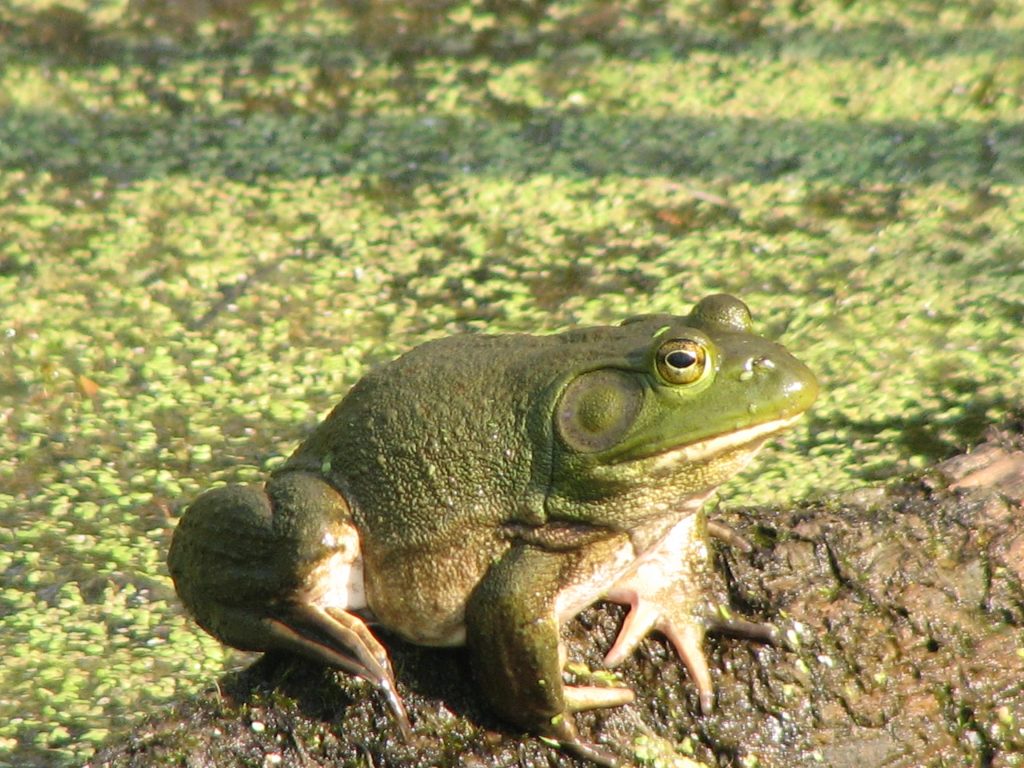Friends of Lake Wingra has begun a new program to help understand and protect the amphibians that call our lake home. We are working with a group of volunteers to listen for frogs and toads near the Vilas Lagoon throughout the spring and early summer to learn when each species is most active in the shallow waters of the lagoon and shoreline where they live. This baseline data is necessary to help ensure that the City of Madison Parks Department and Dane County conduct weed harvesting in a responsible manner and at appropriate times so that they do not kill amphibians unnecessarily. Friends of Lake Wingra believes that this harvesting should be scheduled in a deliberate way that is based on data.
The volunteers will be briefly visiting the park each night after sunset, and will make note of the weather and which frogs or toads they hear calling. The data is collected to document the phenology of the lake. Phenology is the study of the natural cycles and schedules- understanding what happens each spring as plants and animals wake up from their winter sleep and respond to the warmer spring weather. Plants and animals follow patterns, though each year the exact timing is different. Phenology documents these differences and helps us understand the impacts of changing weather and climate on our surroundings.
The Lake Wingra watershed is likely home to nine of Wisconsin’s twelve frog and toad species. From the small spring peepers that announce the end of winter each year to the large bullfrogs that are seen in the Lake, these amphibians are an important part of our ecosystem. According to DNR Amphibian Specialist Rori Paloski, the shallow waters of the Vilas Lagoon are especially important to frogs and toads for breeding, in part because they lose their ice before the rest of the lake. The macrophytes (weeds) that grow in the lagoon offer habitat for frogs and toads, places for them to lay their eggs, and space for tadpoles to grow. The tadpoles even eat the algae that is found in the lagoon. When frogs and toads feel threatened, they seek shelter in weeds, which can be a problem if a large mechanical weed harvester is taking away their homes. We hope that weed harvesting can be responsibly scheduled in early spring before frogs and toads are active in the lagoon, or later in the year when tadpoles have matured enough to avoid the machinery or have moved out into the lake.
The phenology program is part of the Wisconsin Aquatic and Terrestrial Resources Inventory (www.wiatri.net), specifically the Wisconsin Frog and Toad Survey (WFTS). The program is one of the longest running amphibian monitoring projects in North America, and Friends of Lake Wingra is proud to be a part of it! If you are interested in helping out, please contact us at info@lakewingra.org.
-By Ben Yahr
Image: American Bullfrong, Taken by: Cuyahoga Jco

